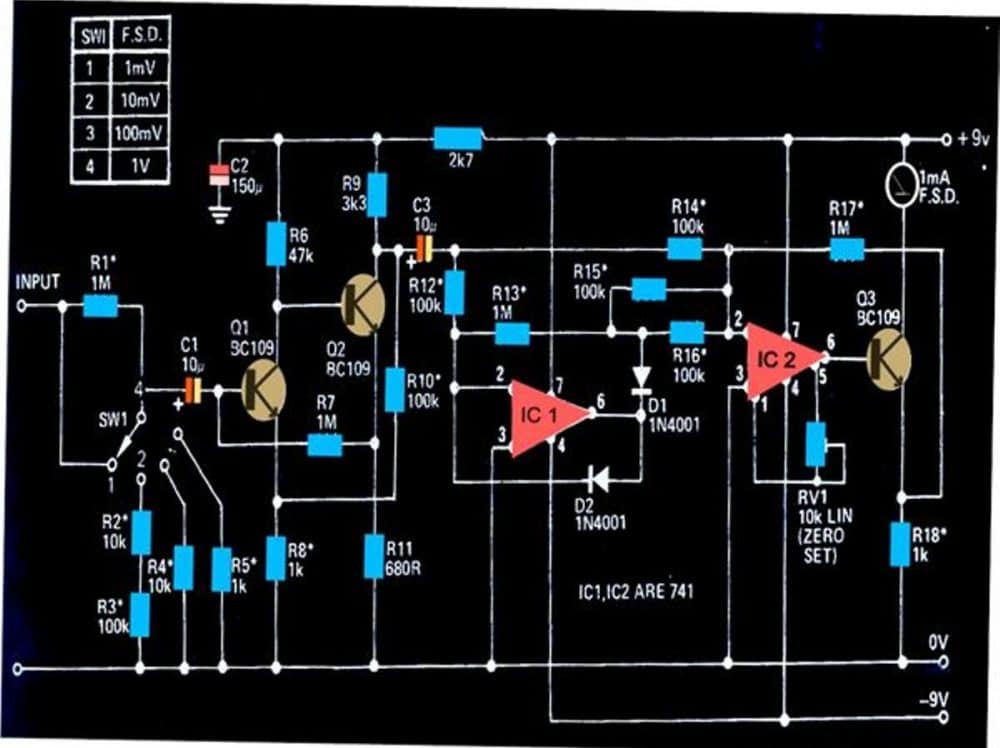In this article we study an op amp based millivolt meter circuit designed to measure AC millivolts accurately, I have explained the details from the following explanation.
The circuit shown below can be used to measure DC potentials in the range of milli-volts.
The circuit is highly sensitive and is calibrated to measure voltages in the range of 1 mV minimum to 1 V maximum.
Measuring potentials in the order of milli-volts is generally difficult using ordinary multimeters.
The circuit shown here can be used for sensing minute AC signals in the range of as low as 0.1 mV.
Circuit Operation
The transistors Q1 and Q2 has been configured as high gain feedback kind of amplifier, with the shown components the amplifier stage has been foxed to produce a gain of 100.
The next stage which consists of two 741 ICs, IC1 and IC2, have been wired up as precision rectifiers.
These together are able to generate a gain of 10 over bandwidth that might extend above 50kHz or below 20 Hz.
The over all gain of the circuit therefore falls in the range of 1000, which makes it imperative to have signals below 1mV well attenuated.
The setting of the AC millivolt meter circuit does not involve much of complication, just the preset RV1 needs to be adjusted initially for making the connected meter show a zero when there's no signal at the input.
All resistors marked with asterisk must be 1% rated, MFR types.


PLS BC547 BD139 USE 10 WATT FM
TRANSMITTER CIRCUIT…(USE HI VOLTAGE) OR OUT BUT STAGE 2N2222
PARALLEL CIRCUIT..PLS
sorry don’t have that circuit right now with me….